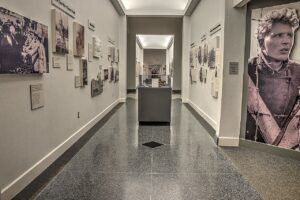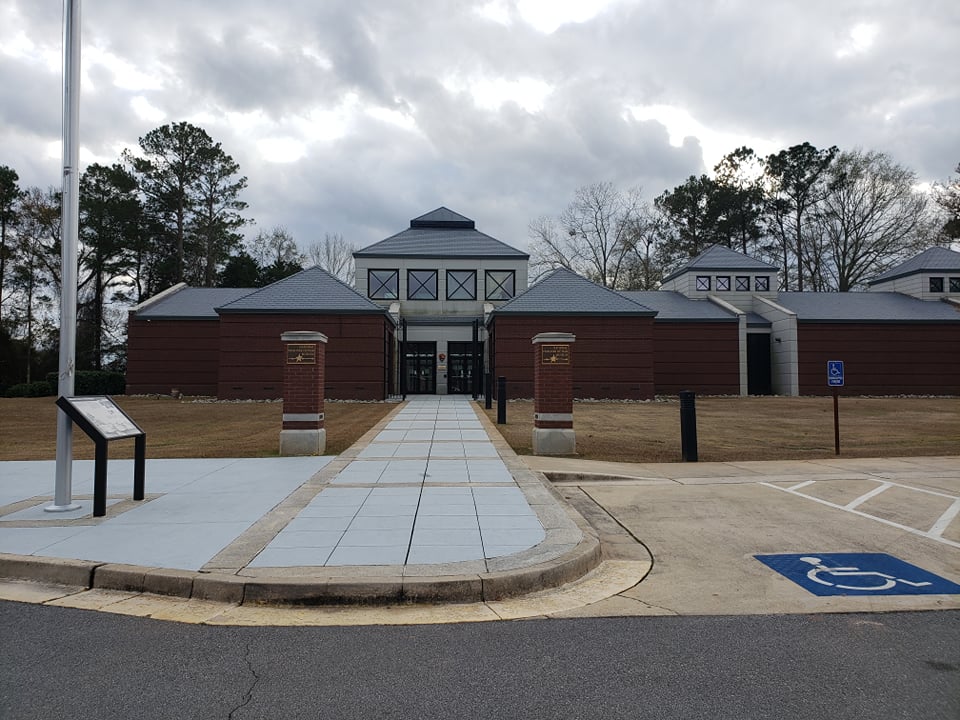In the waning days of December 2021, Bryan and Heather took advantage of their new Alabama home’s proximity to lesser-visited historical sites and embarked on a drive southwest to Andersonville, the infamous Confederate prison where tens of thousands of captured Union soldiers were subjected to hellish confinement between 1864 and 1865. Having worked at the site as an intern during college, Heather was interested in what Bryan might think of the disparate experiences of historical interpretation there. This is the first post in a series documenting those thoughts.
There are certain historical sites that take on a larger importance than their technical jurisdiction. Perhaps the most notable of these is Gettysburg, where the National Park Service resolves to educate visitors on the entirety of the American Civil War in the recognition that, for many visitors, this will be the only site of Civil War history they will ever visit. To my surprise, I found another one of these nexus sites in rural western Georgia at Andersonville National Historic Site.
Andersonville is not exactly along the beaten path, a trait that likely recommended it to Confederates designing a prisoner of war camp in late 1863 and early 1864. Rather than consigning itself to a provincial interpretive outlook like any other site might, however, Andersonville’s visitor center takes on the story not just of its own tragic history, not even the history of prisoners during the Civil War, but in fact interprets the history of all American prisoners of war in general through the main focus of its visitors center: the National Prisoner of War Museum. I was apprehensive about what would greet me as I entered the museum. Americans are not known for their nuance when interpreting moments of national tragedy, and I wondered if I was about to progress through a memorial by another name, simply a tribute to those who have suffered in service of our country devoid of any real historical inquiry.

As I began to read the exhibits and panels, however, I could hardly contain my professional delight. There is, of course, plenty of reverence and memorial for those POWs who have suffered, but the museum is also so much more. The National POW Museum in fact goes back farther than even I would have dared think, beginning its story with the treatment of captured soldiers from the beginning of recorded history. In doing so, it sets up a number of bold interpretive choices that, if only taken a little further, could be one of the most valuable historical experiences for the general public in the country. Visitors are first introduced to the fact that, for the majority of human history, those captured in battle were simply enslaved, their rights and bodily autonomy stripped away to serve their conquerors. As visitors advance, the warfare of the early modern world slowly incorporates nascent ideas of international law and human rights, becoming more “civilized” until arriving at our relatively recent conception of the protections guaranteed to prisoners of war. Yet this is not all; in the process, visitors are reminded that the actual definition of “prisoner of war” is a complicated definition that only applies to certain individuals; furthermore, some countries (like Japan during the Second World War) have not agreed to certain international standards such as the Geneva Convention, while others that have engineer loopholes when it suits them to mistreat those in their care (like the United States following the September 11 attacks).
My only disappointment with the National POW Museum was that, while I was devouring this daring interpretive turn, I couldn’t help but realize that I was connecting too many of these dots inside my own head, and not enough themes were being explicitly demonstrated on the walls in front of me. One panel not far from the ancient slavery paragraphs, for example, told of Confederates’ efforts to re-enslave captured black soldiers, yet relied on visitors to make their own connections between the two (if they even read both). I couldn’t help but think of the problem inherent in any written interpretation: that it only works so far as visitors are actually interested enough to consume it and think about it themselves. Other themes weren’t quite brought as far as I would have liked (such as how the West expects decency from its enemies, but rarely delivers it if fighting a non-Western power), but, to be fair, the NPS can only go so far in terms of provocative history before it regrettably has to answer to its political overlords.
By the time we left Andersonville’s visitors center to continue our tour in the late December sunlight, I was truly grateful for the decisions made in orienting visitors to the history they were about to consume. In the hands of a skilled guide or a knowledgeable friend, the National POW Museum has the potential to not just be a meaningful afternoon, but a continuing lesson on individuals’ freedoms, rights, and status within an international system of law that is universally assumed, yet all too frequently observed only in its absence. This museum may not be the reason you drive hours down those Georgia country roads, but it is certainly not to be missed when you arrive.
